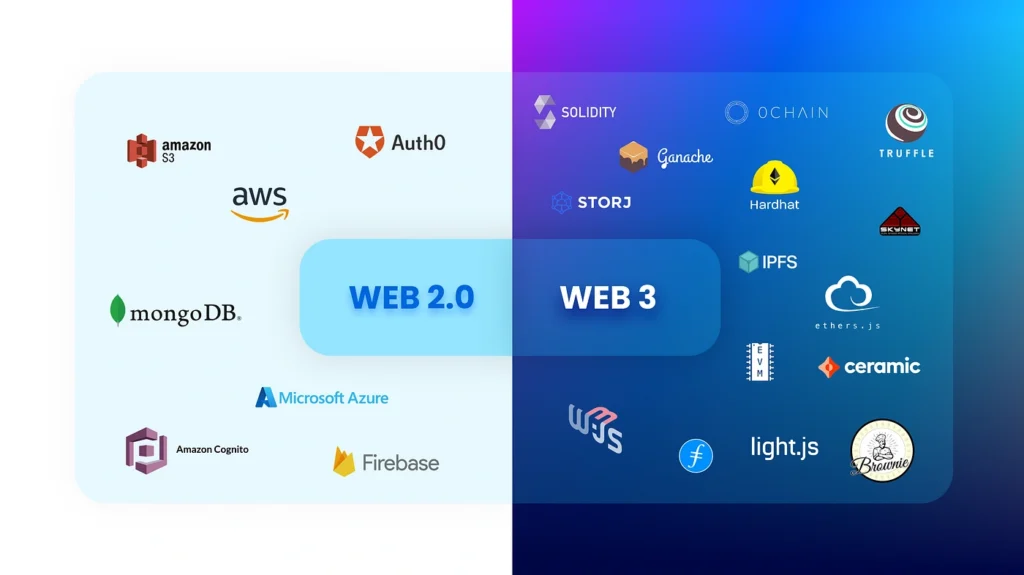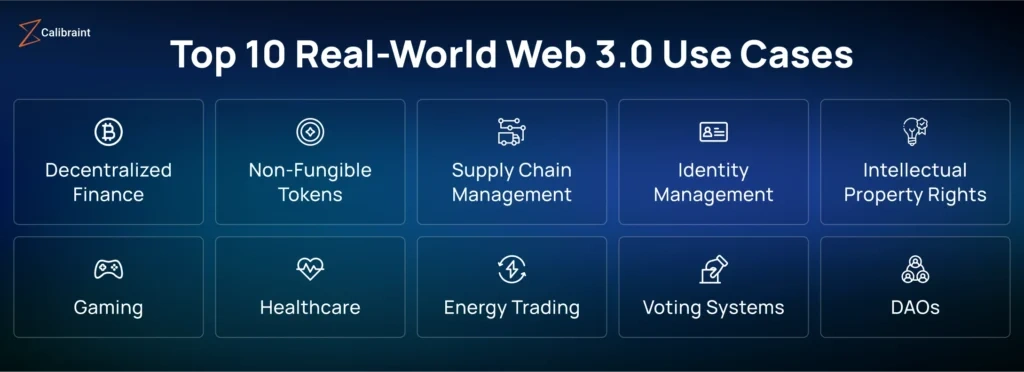Web3 for Beginners is becoming a central theme in discussions about the internet’s future. For newcomers, it can feel unfamiliar—full of terms like “decentralization,” “blockchain,” and “smart contracts.” However, at its core, Web3 is about giving more control and ownership to users, not corporations.
Unlike the current version of the internet, where most services are run by large tech companies, Web3 proposes a structure where control is distributed among its users through decentralized technologies. This article introduces the fundamental ideas of Web3 in simple terms and compares them to what we already know from using the internet today.
Understanding the Web’s Evolution: Web1, Web2, and Web3
To make sense of Web3, it’s helpful to look at how the internet has evolved:
- Web1 (Read): The early web was mostly static. People visited websites to read content, but rarely interacted with it.
- Web2 (Read & Write): This is the internet we use now—full of user-generated content, social networks, and interactive platforms. But companies control the data and monetize it.
- Web3 (Read, Write & Own): A new vision for the web where users not only interact but also own their digital identities, assets, and contributions.
Web3 for Beginners: Key Ideas Behind Web3
Web3 is not a single platform or app. It’s a set of principles and technologies aimed at changing how the web works. These are its core elements:
- Decentralization: Instead of centralized servers, information is stored and verified across networks of computers.
- Blockchain Technology: A transparent, tamper-resistant way of recording data that underlies many Web3 applications.
- Smart Contracts: Programs that execute automatically when certain conditions are met—without needing human intervention.
- Token-based Economics: Digital tokens represent value, ownership, or rights, and can be earned or traded.
- User Control: Individuals manage their identity and data using tools like crypto wallets instead of relying on usernames and passwords from major platforms.
How Web3 Differs from Web2: A Side-by-Side Look

Credit from Medium
| Category | Web2 | Web3 |
|---|---|---|
| Data Ownership | Platforms store and control user data | Users control data via wallets and protocols |
| Identity | Centralized logins (e.g., Google, Facebook) | Decentralized identity through cryptographic wallets |
| Content Monetization | Platforms earn from content creators | Creators and users earn directly via tokens |
| Infrastructure | Servers owned by companies | Networked nodes support decentralized apps |
| Governance | Company-led decisions | Community-led via voting and DAOs |
This shift isn’t just technical—it’s about who has control and how decisions are made online.
Web3 for Beginners: Real-World Applications of Web3

Credit from Calibraint
Web3 is already being used in different ways, even if you haven’t noticed it yet. Below are some examples across industries:
- Finance (DeFi): Decentralized finance allows people to lend, borrow, and trade without traditional banks. Apps like Uniswap or Aave run entirely on blockchain.
- Art and Digital Ownership (NFTs): Artists can sell digital artwork as non-fungible tokens (NFTs), which prove authenticity and ownership.
- Decentralized Social Platforms: New social platforms are giving users control over their data, content, and community.
- Gaming: Web3 games allow players to own in-game items and earn digital currency through play.
- Publishing: Writers and creators can use platforms like Mirror to share their work and get paid directly by readers.
These examples show that Web3 is not a future concept—it’s already functioning in real markets.
Web3 for Beginners: Why People Are Talking About Web3
What makes Web3 so interesting is its potential to reshape power on the internet. Here’s what’s driving the conversation:
- Digital Ownership: From artwork to online identity, Web3 allows people to prove and keep ownership of digital things.
- Transparency: Everything on the blockchain is visible to anyone. This reduces hidden actions and builds trust.
- Global Access: Anyone with internet and a crypto wallet can participate in Web3 apps, even without a bank account.
- Fair Participation: Token models allow users to share in the value they help create, unlike Web2 platforms where companies profit the most.
However, with innovation comes challenges.
Web3 for Beginners: The Challenges Ahead
Despite its promise, Web3 faces obstacles:
- User Experience: Tools like wallets and dApps are still complex for new users.
- Scalability: Blockchains can be slower and more expensive than traditional systems during busy times.
- Security: While blockchains are secure, scams and poorly written smart contracts pose risks.
- Environmental Impact: Some blockchains use large amounts of energy (though newer systems are addressing this).
- Legal Uncertainty: Regulation is still catching up to how Web3 should be managed globally.
These are not deal-breakers, but important issues for developers and users to solve together.
How to Explore Web3 as a Beginner
Getting started doesn’t require technical knowledge, just curiosity. Here’s a simple approach:
1. Set Up a Wallet
Install a browser extension or app like MetaMask. This is your Web3 identity.
2. Try a dApp (Decentralized Application)
Examples include:
- OpenSea for exploring NFTs
- Zapper for managing Web3 assets
- Mirror for writing and publishing on-chain
3. Learn from Communities
Many active discussions happen on platforms like Discord, X (formerly Twitter), or Reddit. Find beginner-friendly groups and ask questions.
4. Start Small
Use testnets (fake blockchain networks) to try things risk-free. Many projects offer learning rewards or test tokens.
5. Follow Tutorials and Courses
Platforms like LearnWeb3, buildspace, or ChainShot offer step-by-step guides that assume no prior knowledge.
Web3 Isn’t Just for Developers
Even though it’s rooted in technology, Web3 is for anyone interested in how the internet might evolve. Artists, writers, gamers, investors, and community builders all have a place in this ecosystem.
In the same way email became common without users needing to know how servers work, Web3 will become more accessible as better tools are developed. What’s important is understanding the basic ideas now.
Looking Ahead: What’s Next for Web3?
Web3 is still early in its development. The tools are improving, the communities are growing, and the use cases are expanding. Some trends to watch include:
- More seamless user experiences with better-designed wallets and apps
- Interoperability between different blockchains and platforms
- Mainstream adoption as large companies experiment with Web3 tools
- Greater focus on privacy and user rights
Even if it doesn’t replace Web2 completely, Web3 introduces new options that could lead to a more open and participatory internet.
Final Thoughts: Why Learning Web3 Matters
Whether you’re a student, a creator, or just a curious observer, understanding Web3 helps you engage with the future of the internet. This shift brings a different way of thinking—one where users have more say in how platforms work and more stake in the value they help build.
Web3 is not a destination, but a journey—one built by communities, developers, and ordinary users who want a more open digital world. By starting with the basics, you can decide how you want to participate.



